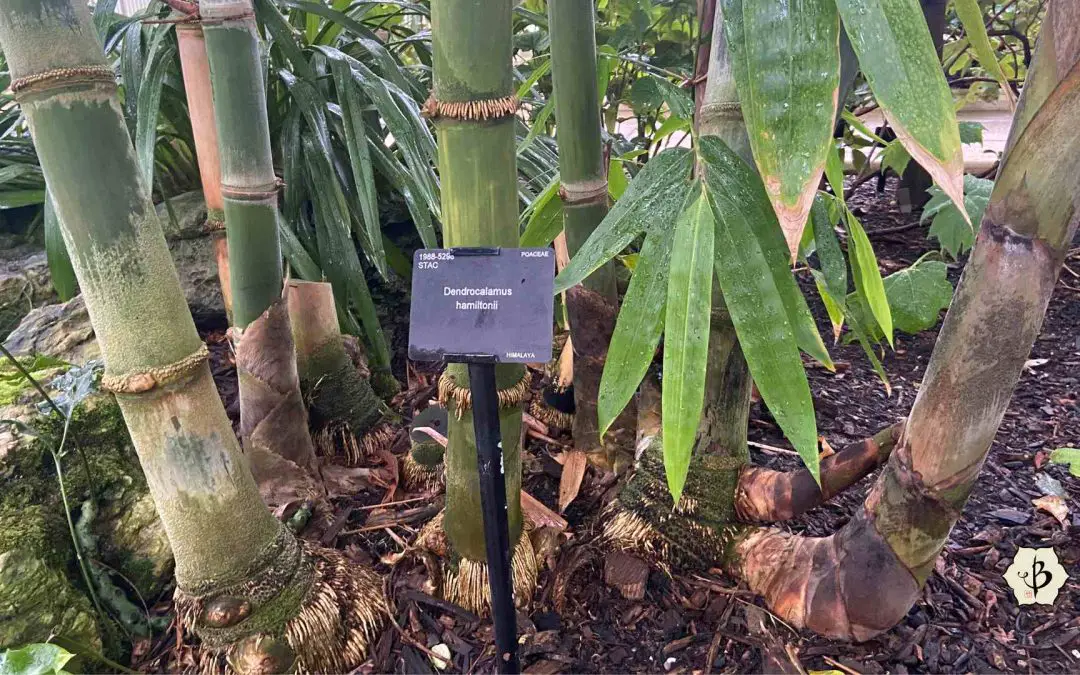Dendrocalamus hamiltonii is a large clumping bamboo native to southern Asia, including India, Pakistan, Sri Lanka, southern China, and Southeast Asia. Culms are thick and strong, but not perfectly straight, so they may have industrial applications, but are not ideal for construction.
This article is part of an extended series about bamboo species and taxonomy. Explore some of these links to discover more.
- Bamboo Species Directory
- Bambusa oldhamii: Chinese timber bamboo
- Bambusa vulgaris
- Oxytenanthera abyssinica: Lowland savanna bamboo
- Schizostachyum brachycladum: Sacred Bali bamboo
- Thyrsocalamus liang: Thai bamboo
Characteristics of Dendrocalamus hamiltonii
Like other large Dendrocalamus bamboo species, D. hamiltonii can grow up to 60 or 70 feet tall and 5 to 6 inches in diameter under ideal conditions. In this case, ideal conditions will be found around the tropical belt, in southern Asia, where it grows endemically, and in sub-Saharan Africa, where it has been introduced. Part of its natural distribution includes the foothills of the Himalayas, so it can withstand more frost than most other members of the genus.
D. hamiltonii is also somewhat drought-tolerant, requiring less water than many other varieties of tropical bamboo. This makes it a good species for arid climates, including the African savanna, the Sahel, and many parts of southern Asia.
The culms of Hamilton’s bamboo are usually a dull grayish green. Branching starts low on the plant, all the way down to the base of the poles, similar to D. strictus, but unlike D. asper or D. giganteus. This makes the plant less attractive as an ornamental species. As with other members of the species, branches form in clusters at the nodal joints with one main branch and several smaller ones.

While the culms are similar in size to other giant bamboo species, the clumps will not reach the size of an Asper or a giganteus clump. A dense, mature clump might have 20 to 30 culms, rather than 50 to 100.
Also, the culms are not very straight, but tend to zig-zig, which makes them less useful for formal building purposes. However, the culms are quite thick so they are very strong and sturdy. Therefore, Hamilton’s can be a good building material for construction applications that do not require straight poles. It’s also a good biomass for pulp, charcoal and biochar.
Further reading
To learn more about bamboo in other parts of the world and its many uses, take a look at some of the other articles.
PHOTO CREDIT: Tidy clump of Dendrocalamus hamiltonii in the temperate greenhouse at Kew Gardens, London. Photo by Fred Hornaday.

























